This blog post was written by JKP author Jessica Sinarski, LPCMH.
Everything we feel, think, say, and do is related to the information coming in through our senses, and we have more than you might think.
All BEHAVIOR comes from the BRAIN
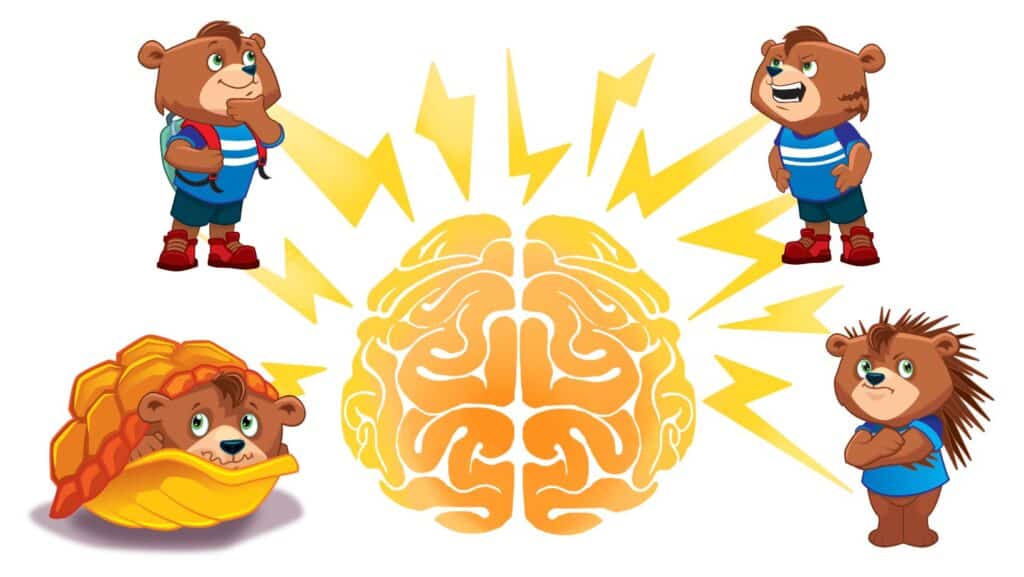
The BRAIN is getting information from EIGHT SENSES
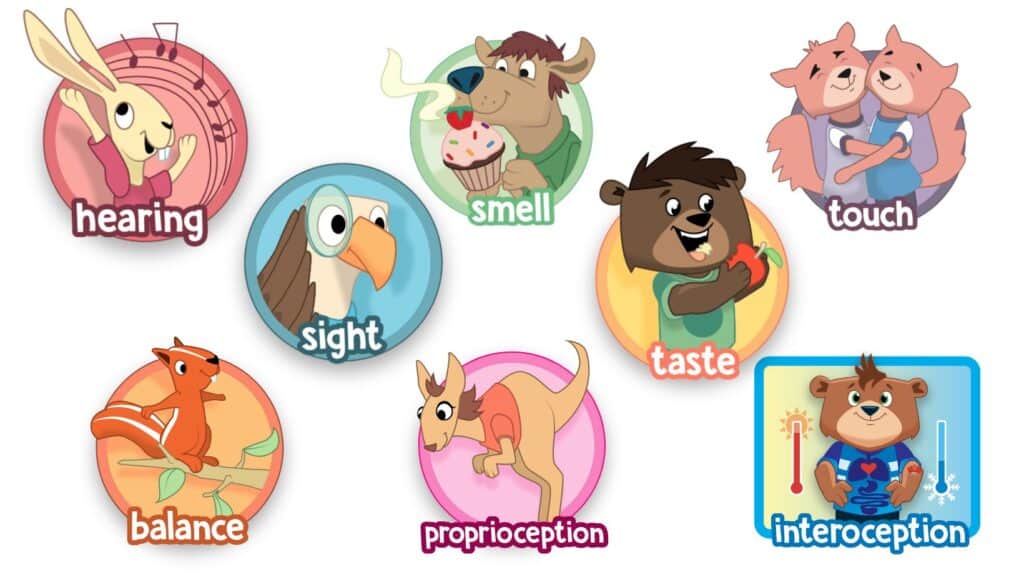
Understanding our SENSES will help us understand BEHAVIOR
Let’s break this down a little further. Here are some of the BEHAVIORS you might see in the classroom:
- Fidgeting, wiggling, getting up and wandering around
- Grumpy, complaining, whining
- Unable to focus, distracted (and distracting others)
- Overloaded, head down on desk, checked out
If we could peek inside at the SENSES, we might see this:

ACK! So many uncomfortable sensations from my shirt, socks, desk, and that kid sitting too close.
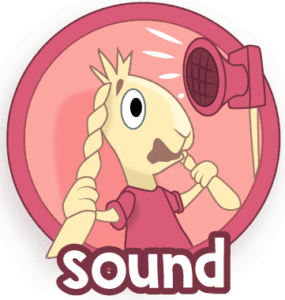
QUIET! My classmates are loud, too many sounds at once, irritating noises. I’m going to make some noises myself so I can control the sound.

TOO MUCH! This room is visually loud. I’m overstimulated.

BLECH! That smells disgusting! Run and hide!
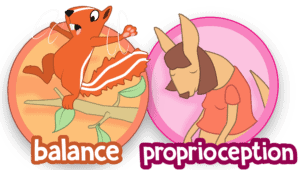
We don’t know WHAT we feel! Let’s touch everything and everyone. Let’s wiggle and wander and tap our feet. Using my hands to write is hard if I can’t figure out where my body is in space!
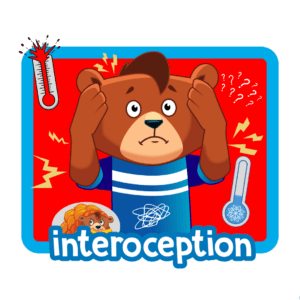
HMMMM… my brain and body feel disconnected, so I’m going to play it safe and just say DANGER!! A hungry belly feels terrifying. The pain from a paper cut feels huge. A fun time at recess can lead to being overheated, which brings on a meltdown. And when that’s all too much, let’s just stop feeling anything!
This is not even close to an exhaustive list. In fact, some of the senses might be feeling the exact opposite. Some kids want to touch or smell EVERYTHING instead of avoiding textures and smells.
Our senses help us enjoy life, but when they are confused or overwhelmed, they get extra protective! There is a wide range of “typical” sensory preferences, for example, the weight of blanket or type of fabric you like, certain smells or sounds that bother you, etc. In contrast, for people with sensory processing difficulties, every aspect of life is impacted by a swirl of too much and too little information coming in. It can be confusing to detect because there are so many combinations of how our senses might be interacting with each other.
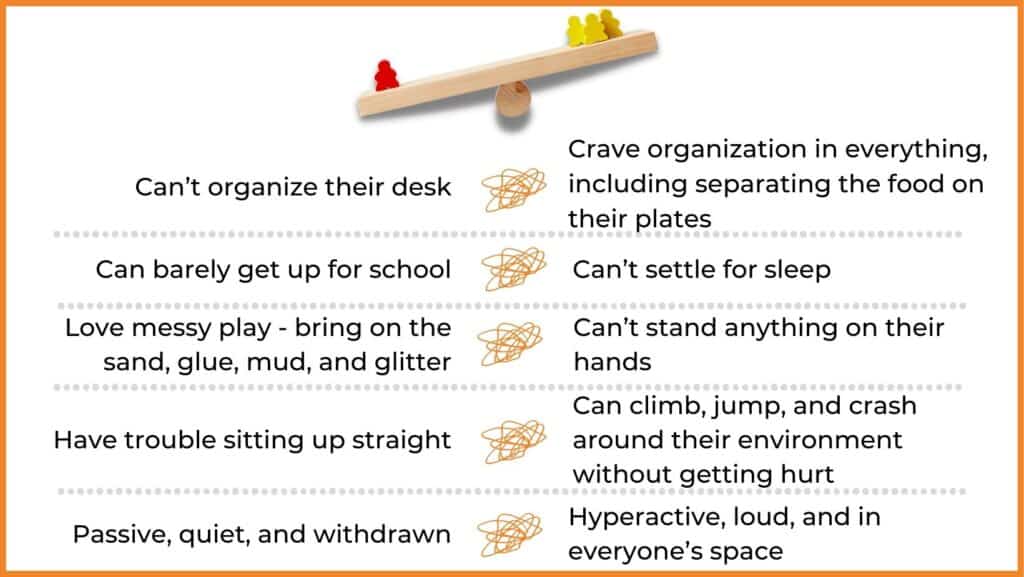
Even as you read this, your eight senses are sending eleven million bits of information to your brain every second! We are only conscious of, at most, 40-50 of those bits, but it’s easy to see how the brain can get flooded. When overwhelmed, the brain tends to produce some mixed-up feelings and frustrating behaviors, those “downstairs brain moments” I’m always talking about. Is your porcupine brain saying: “What do you want from me, lady!? This is too much.” Or maybe your turtle brain wants you to shut it all down. I’m here to offer some co-regulation as we get to know our sensational senses. Hang with me…I promise there’s hope!!
SENSATIONAL STRATEGIES FOR SCHOOL:
- Use gentle lighting. Along with the benefits visually, the buzz of fluorescent lights may be an irritant under the surface for students and staff alike.
- Reduce distracting noises. Put tennis balls on chair legs or fabric on the walls.
- Offer flexible seating arrangements, like wobbly chairs, the choice to lay on the carpet to do work, resistance bands on chair legs, etc. Teach the whole class about the available options and how to use these tools to find the “just right” state for their learning brain.
- Prioritize human connection over screen time. Screens are no friend of the senses!
- Provide visual schedules and prompts. Whenever you can get more than one sense involved in instruction and expectation setting, you increase the likelihood that students with varied learning styles and sensory needs will be successful.
- Use a visual timer or interchangeable prompts on the board. A strong magnet can hold a sheet protector full of the prompts you use regularly.
- Get down on a student’s level when trying to get attention. A gentle hand on the shoulder or other safe touch is especially important for kids with explorer brains who might need a little extra support to go with the group plan.
- Emphasize the routine or pattern of things with physical gestures. Try miming what is expected or creating fun physical cues to help students remember.
- Prioritize recess. Don’t take it away…find ways to get outside more! Instead of a movie in class, how about extra time on the playground or in the gym?
- Take a brain break. I was teaching a group of school counselors recently, and I saw the fog roll over their faces just before lunch. Rather than pushing through to the activity I planned, I read the room. They needed to move their bodies and get some food before they would have the brain power to think and reflect. If this is true for adults, how much more for our students?!
- Do something rhythmic like a clapping game.
- Go for a quick walk or do a few wall push-ups.
- Dance to a song and then take a few big, full-body breaths as everyone heads back to their seat.
- Do a group stretch. Take turns leading, offering all students a chance to choose the moves that day.
And if you’re thinking…but it will just become chaos! My students will get too rowdy! Remember that you may need to co-regulate back to that “just right” spot after doing some of these activities, especially with younger students. Try slowing your claps down together or pretending to move through thick honey super slowly to get back to their seats. End your activity with a big, deep, full body breath with a long exhale as everyone gets back to work. In addition to getting the sensory input their learning brain needs, these calming activities help build students’ self-awareness and ability to regulate themselves. Sounds like positives all around!
Are you seeing the power of getting to know our sensational senses??
- Brains that were overloaded with danger signals can pay attention to the lesson.
- Bodies that need movement can stop focusing on staying still and focus on learning.
- Shame from not being able to sit still, quiet, and focused can be replaced with confidence.